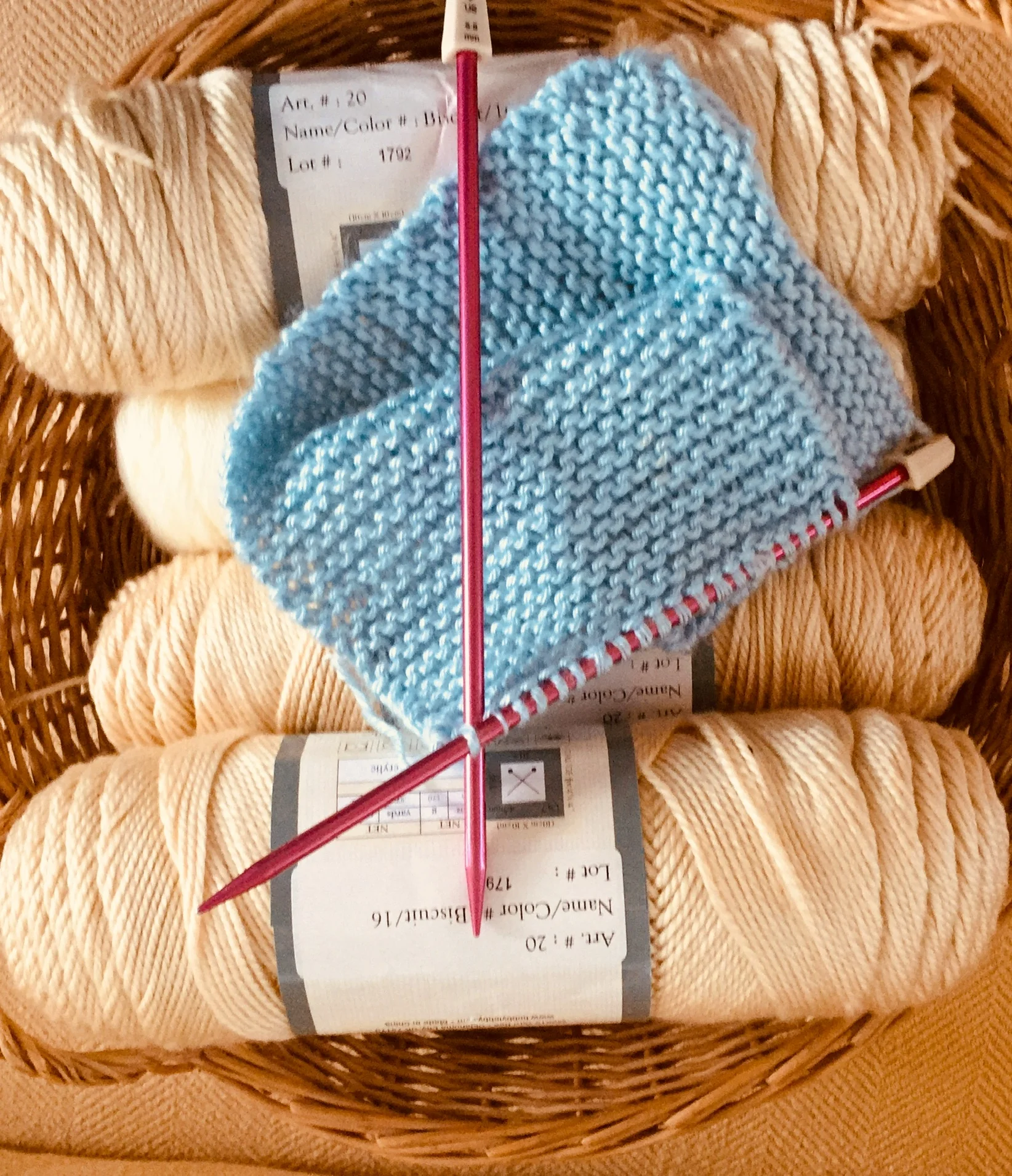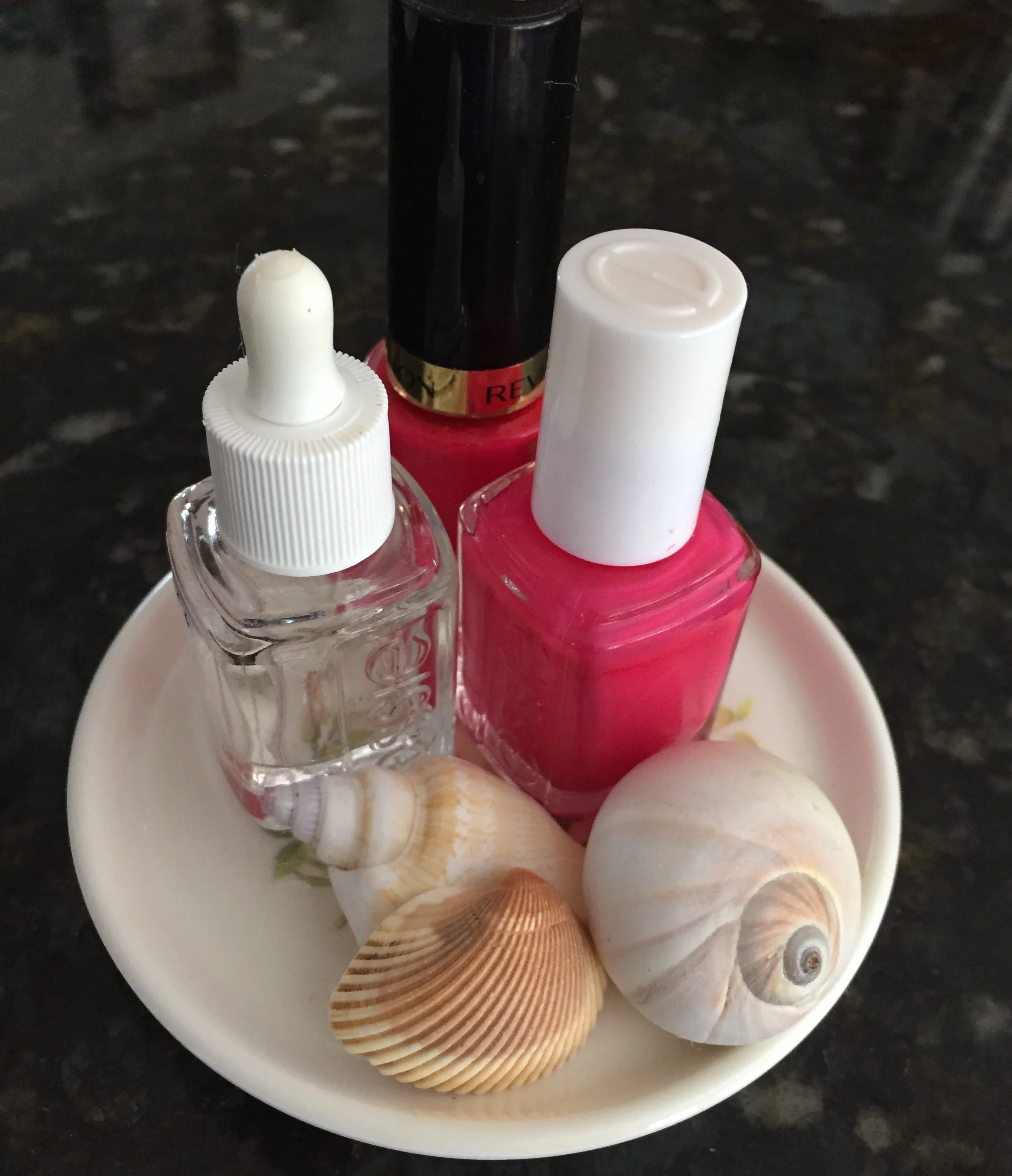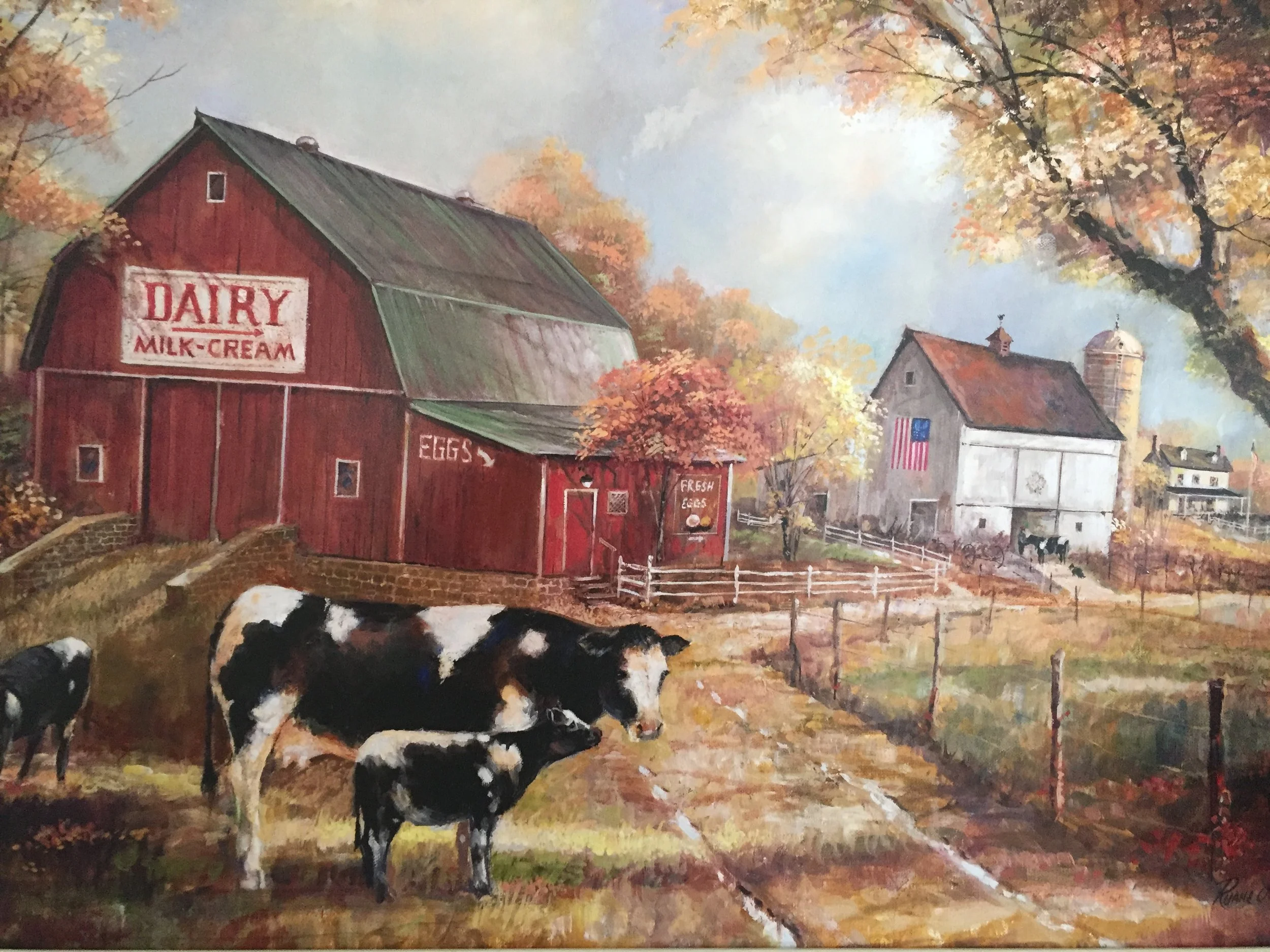Knitting and Crocheting
When my Mom developed dementia, I was always looking for things that would stimulate her mind and help keep her busy with things she enjoyed. Mom taught me how to crochet and knit when I was a girl, but neither of us did any needlework for many years. I was not sure if she or I would remember how to even start, but thank heaven for YouTube.com.
First, I went to our local arts and craft shop and picked out some yarn and needles. Next, I was able to find a couple of YouTube introduction tutorials on casting on stitches and knitting an easy scarf. It did not take me long to remember enough of the basics to make a simple scarf in a few evenings. Ok, I was ready to show Mom how to do it even though her memory was so comprised. Amazingly, Mom picked it up quite quickly. Somewhere among all of the memory cells was the file on knitting and Mom quickly retrieved the skills that she had so many decades previously. The key was keeping the pattern simple and repetitive. So she knitted beautiful scarves in gorgeous pastel colors. She made her knitted marvels for many of the women residents and staff at the assisted living facility. Knitting became a gift to Mom because it used her hands and her mind. It offered a distraction to the monotony of her days and it served as a conversation piece for those who approached her while she weaved the yarn through her needles.
I learned to crochet again while Mom knitted. I found that I could crochet much more quickly than I could knit. I enjoyed getting lost in the crochet project in the evening while my husband and I watched television. The ability to take a skein of yarn and change it into an actual piece of clothing continues to surprise me every time I make a hat, a vest or a shawl.
Then I developed Parkinson’s which made it more and more difficult to maneuver the crochet hook with the fine yarns. I thought I would need to give up my beloved hobby, but I decided to make some adjustments instead. I began to use bulkier yarns or double the fine yarns. I also switched to a much larger hook making it easier for my tremoring hands to work the yarn. I took on larger projects such as making blankets and throws and pillows. With each project, I gained more confidence that my disability would not stop me from doing something that I loved.
This year, I returned to knitting. Over the years, I have noticed the variety of yarns has evolved greatly. There is a multitude of colors and fibers of yarns allowing even a beginner to create a masterpiece. I find both knitting and crocheting are calming and actually help the tremors. Since Parkinson’s are resting tremors, engaging your hands continually helps reduce the movements. The additional advantage of the repetitive motion is that it leads to strong muscle memory which is good for the brain and the extremities.
I just finished a fuzzy, comfy pillow for a friend and the pleasure of seeing her joy from the gift added to my enjoyment of making it. My next projects include sweaters for our four-legged faimily members. Since there are large labs, I will have my hands full for the upcoming months.
Just a note on the photo for this post: my Mom was working on a pretty scarf in one of her favorite pastel blue yarns. She passed on before she was able to finish it, but I treasure the work in progress as a beautiful memory of Mom’s artwork. I will not finish it, but frame it just as it is. Stitches so carefully made by my Mom……


